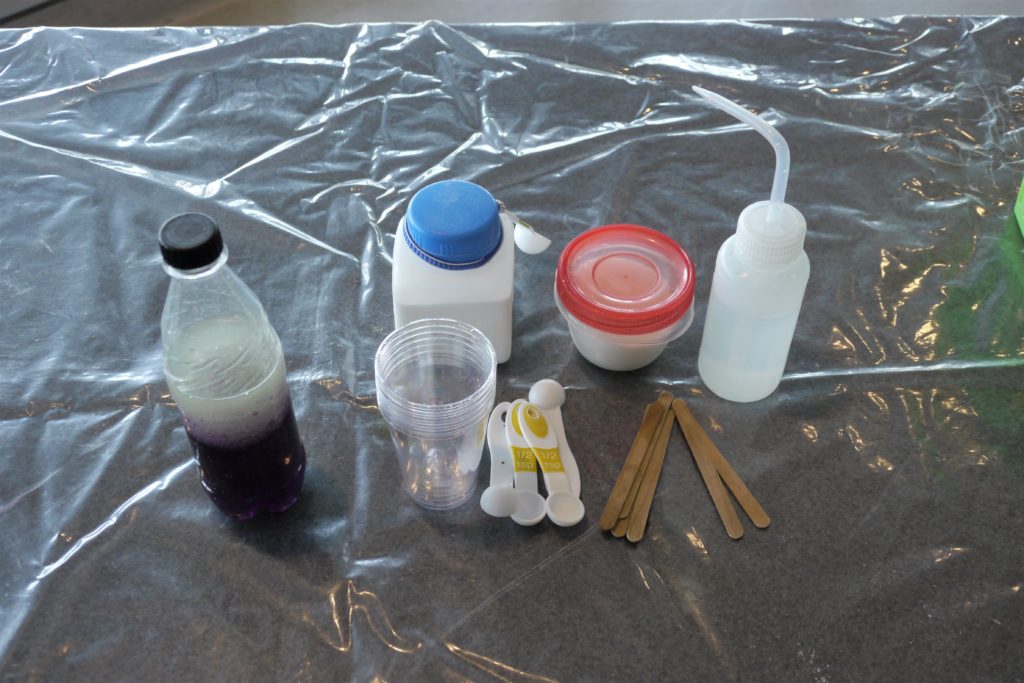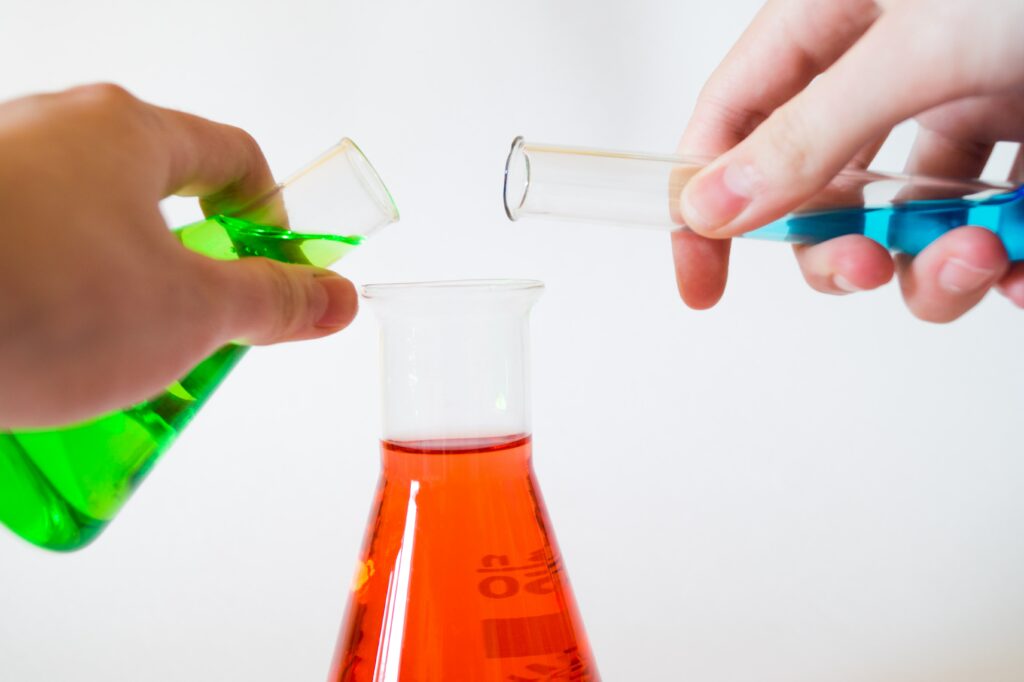In this demonstration, students will see up close how the process of sublimation works with dry ice as an example.
Dry ice is solid. It sublimates or changes states from a solid to a gas at temperatures of -78 degrees Celsius under normal atmospheric pressure of 1 atm. Because of its low temperature at normal atmospheric pressure, it is useful as a coolant.
When dry ice is placed into warm water, a cloud forms. This cloud is similar to the clouds we see in the sky. The cloud consists of water droplets that are trapped inside the carbon dioxide gas and eventually flow out. It forms because the dry ice is cold enough to make water from the air condense.
Safety tip: Dry ice is cold to the touch and can cause severe burns from freezing if it comes in contact with skin. Be very careful when handling dry ice and ensure to wear the proper safety gear and use the correct safety equipment.

